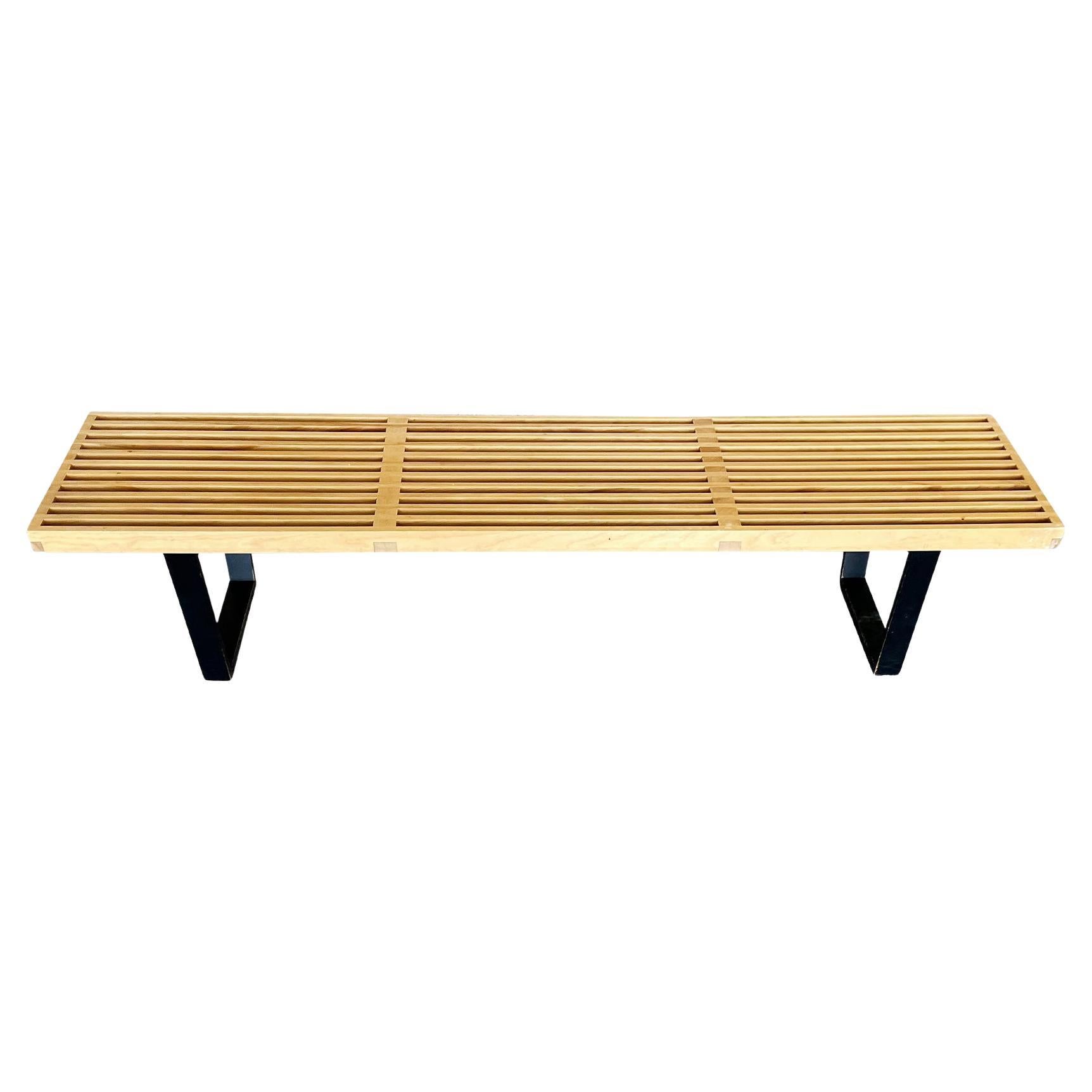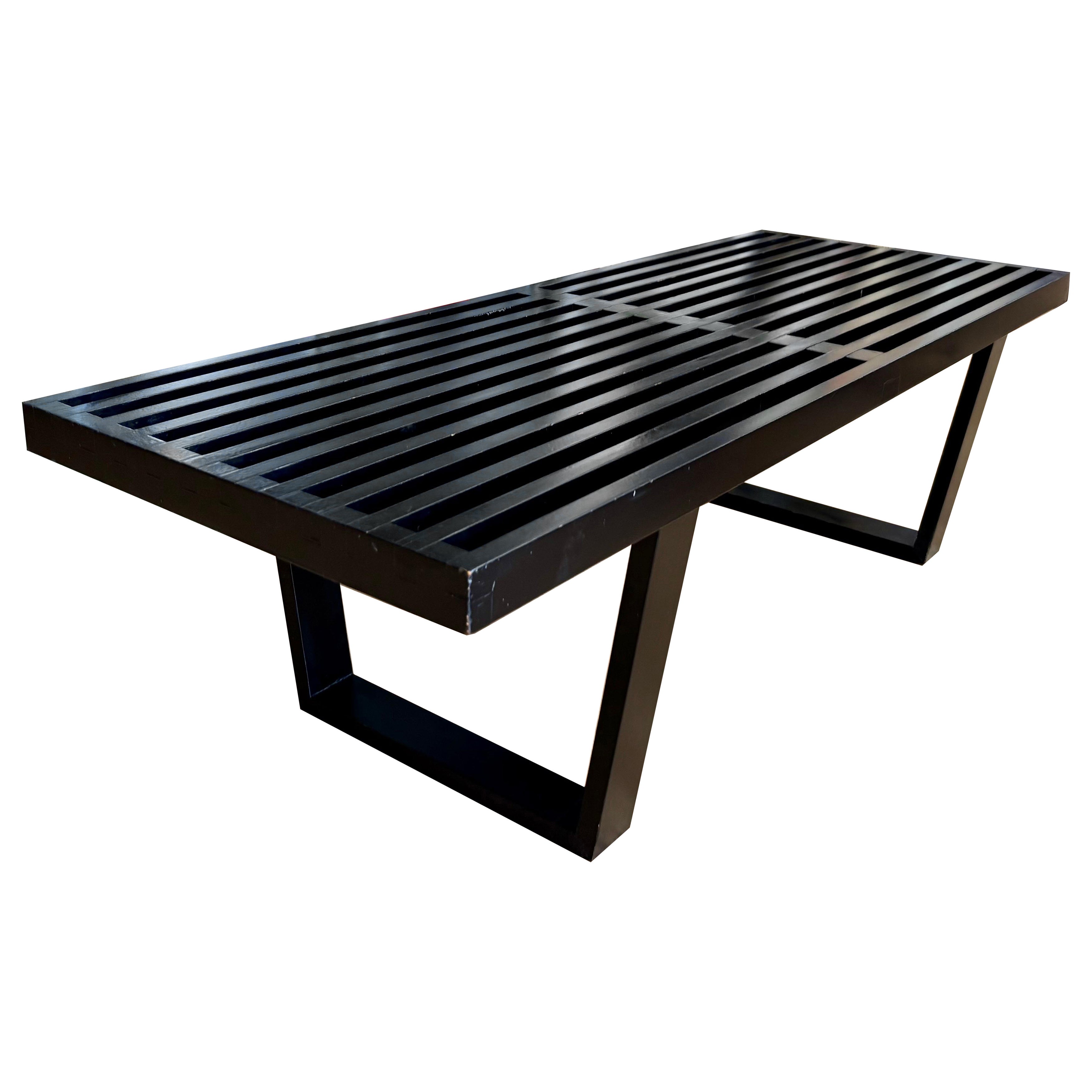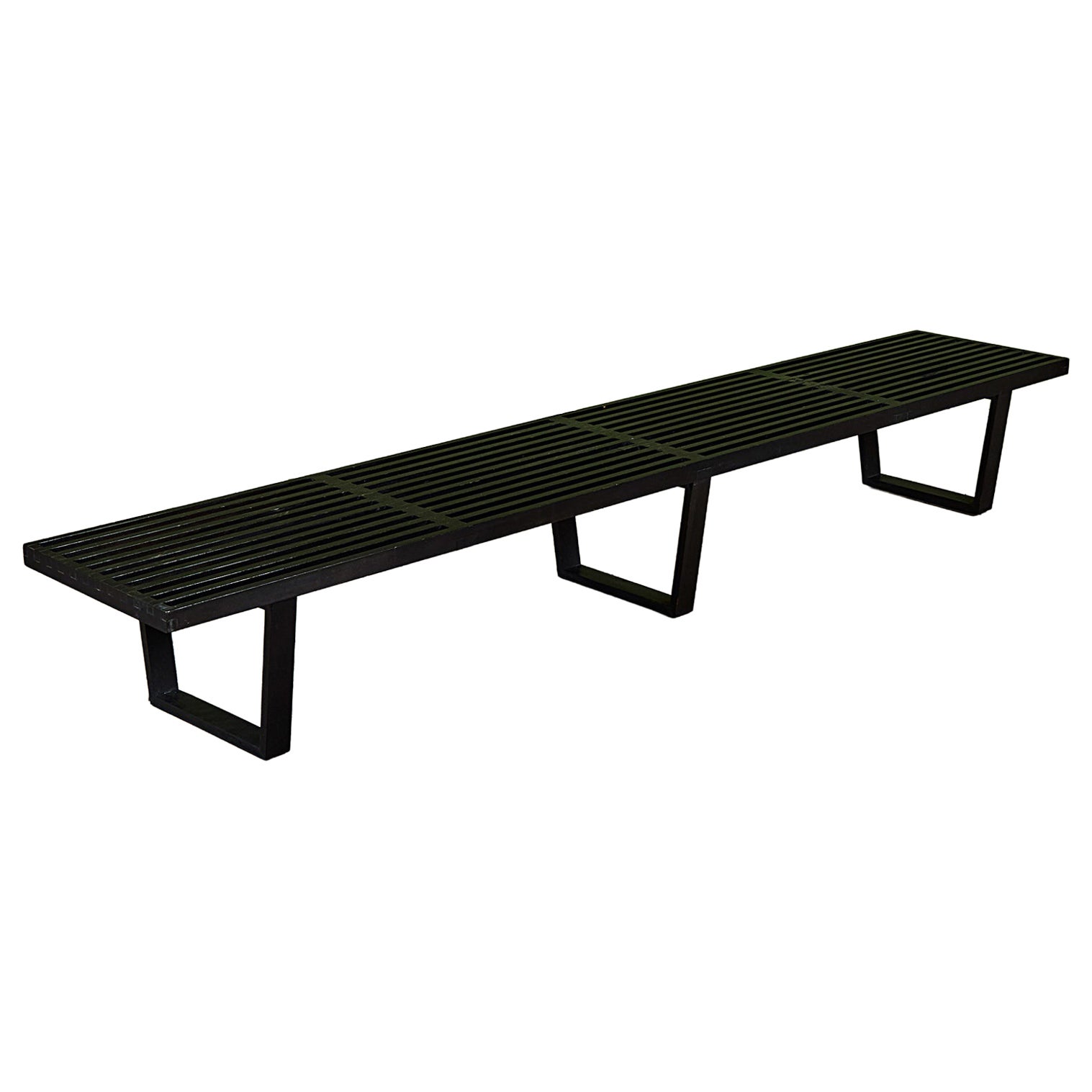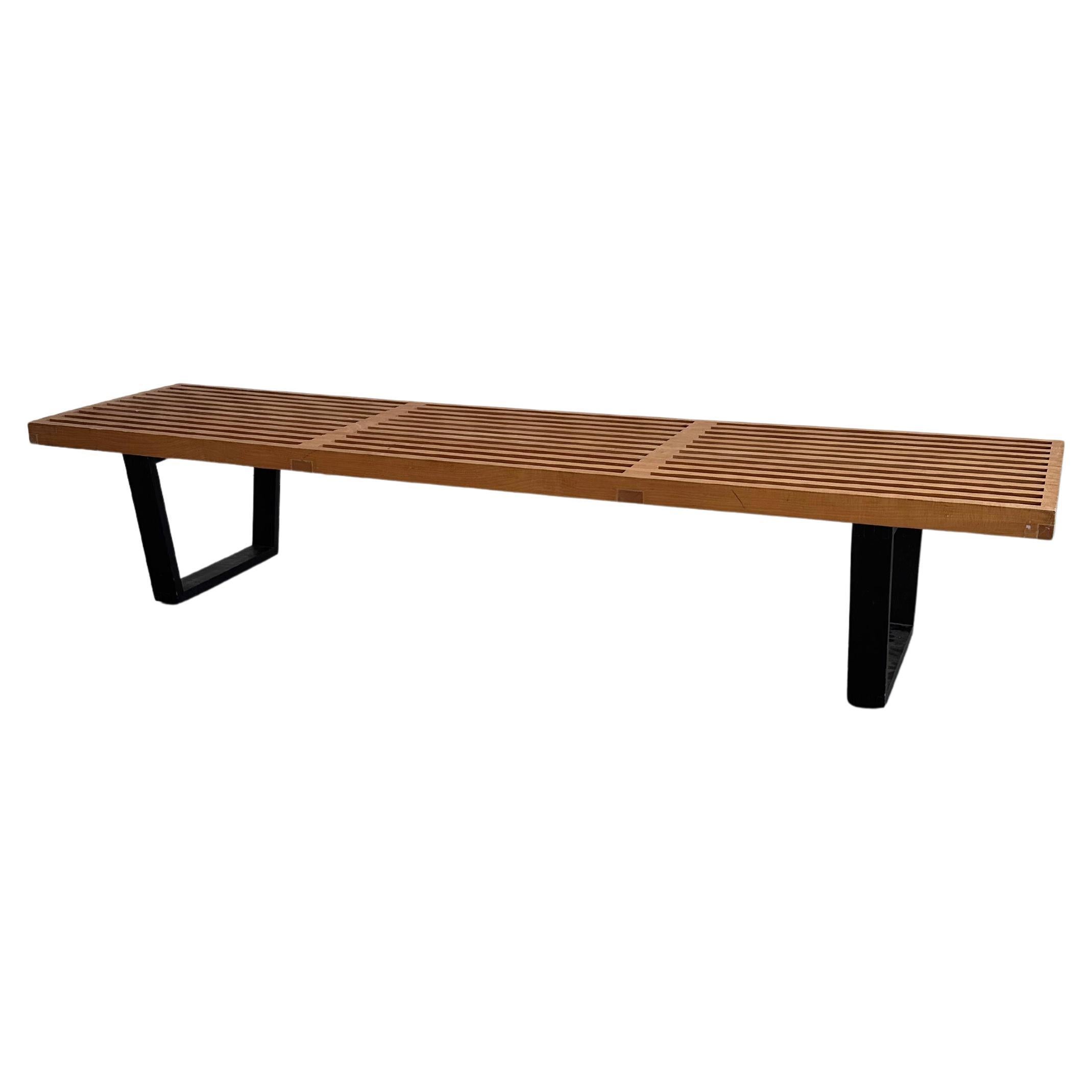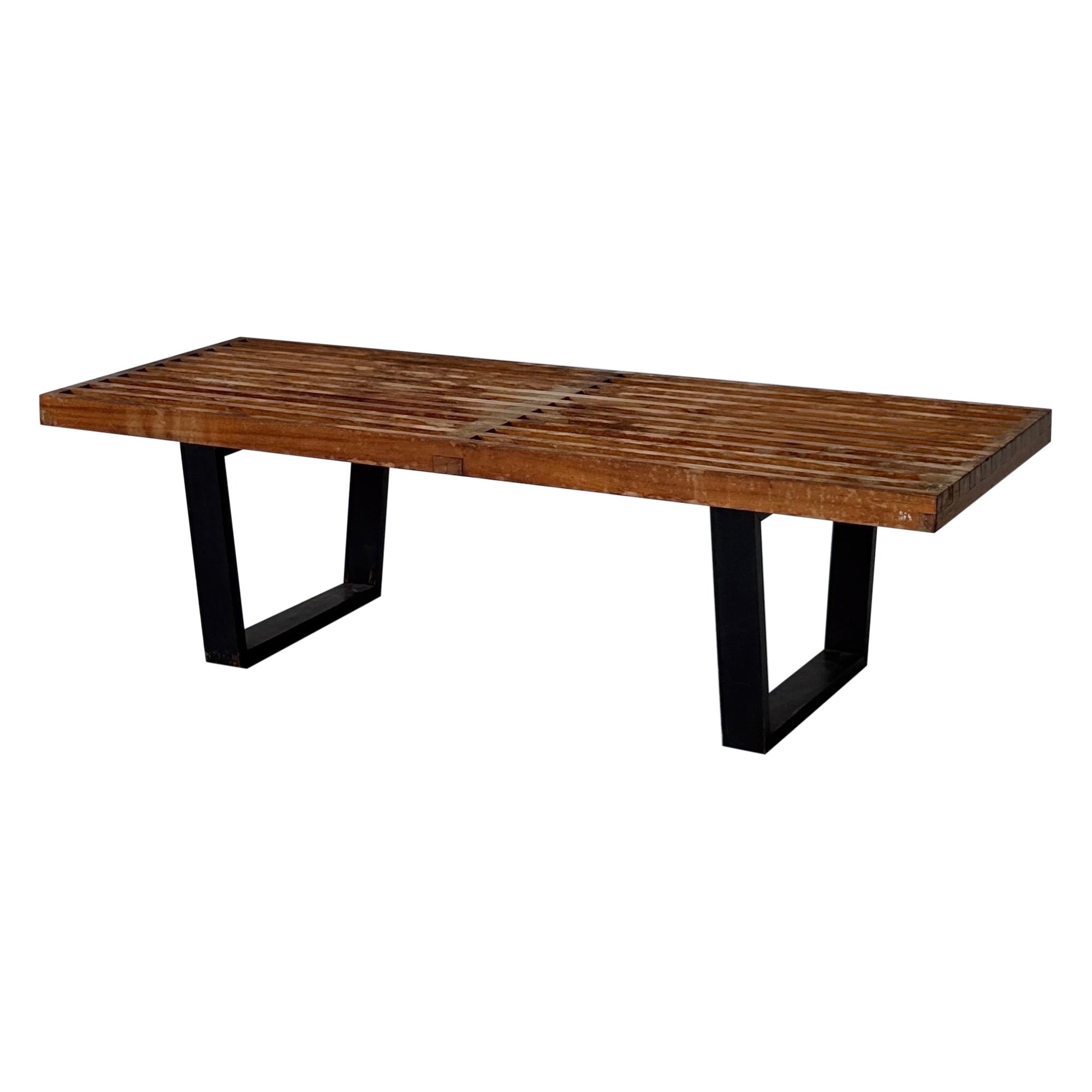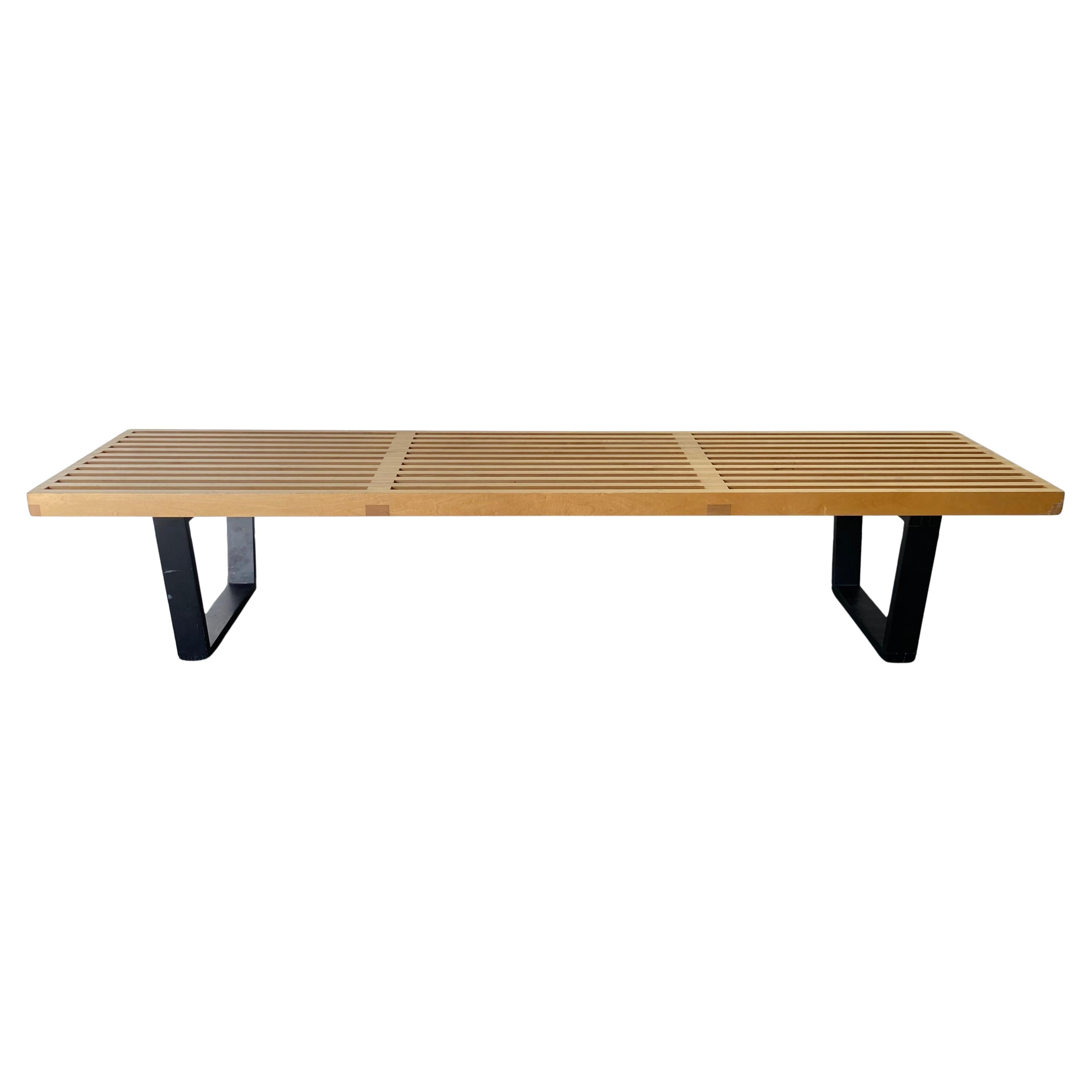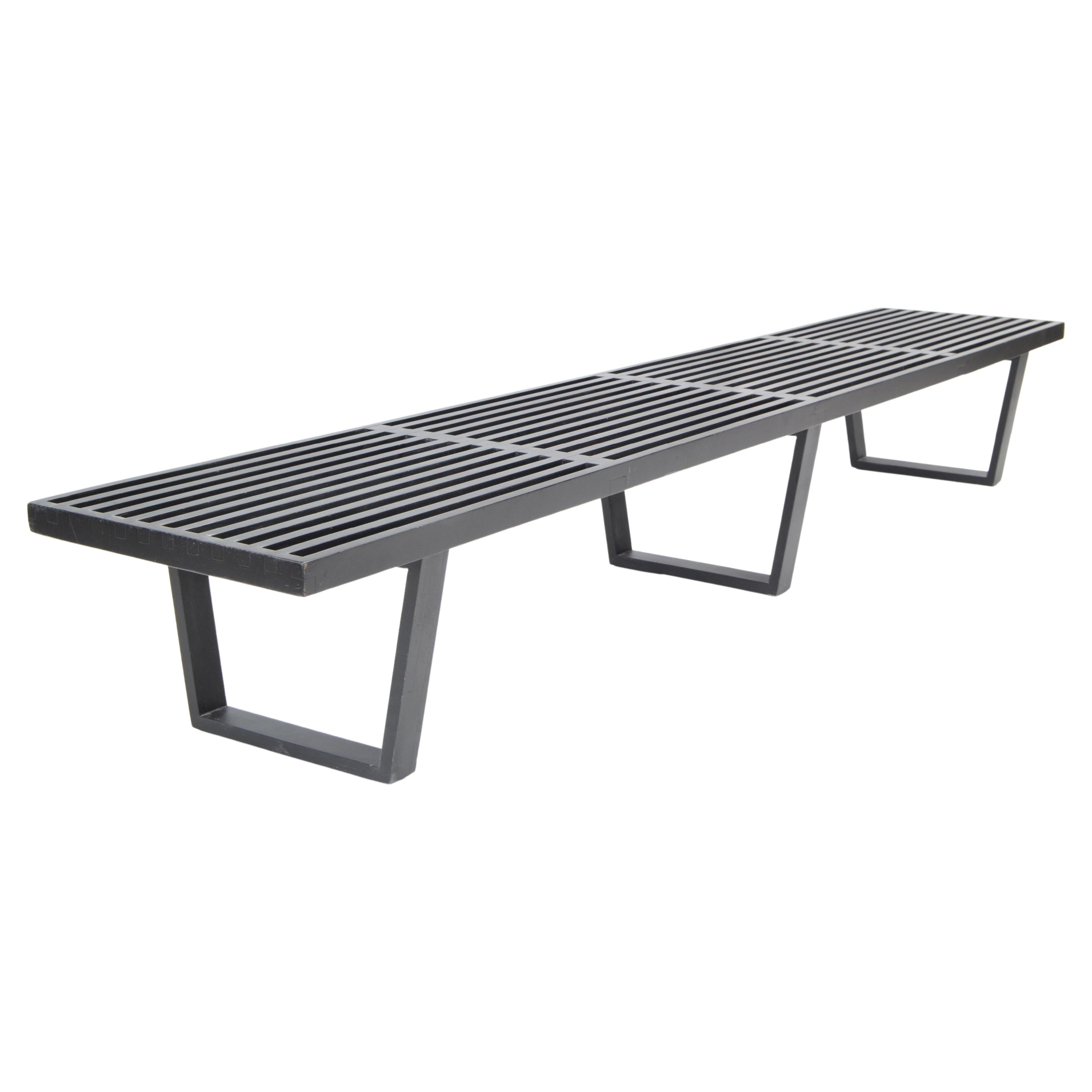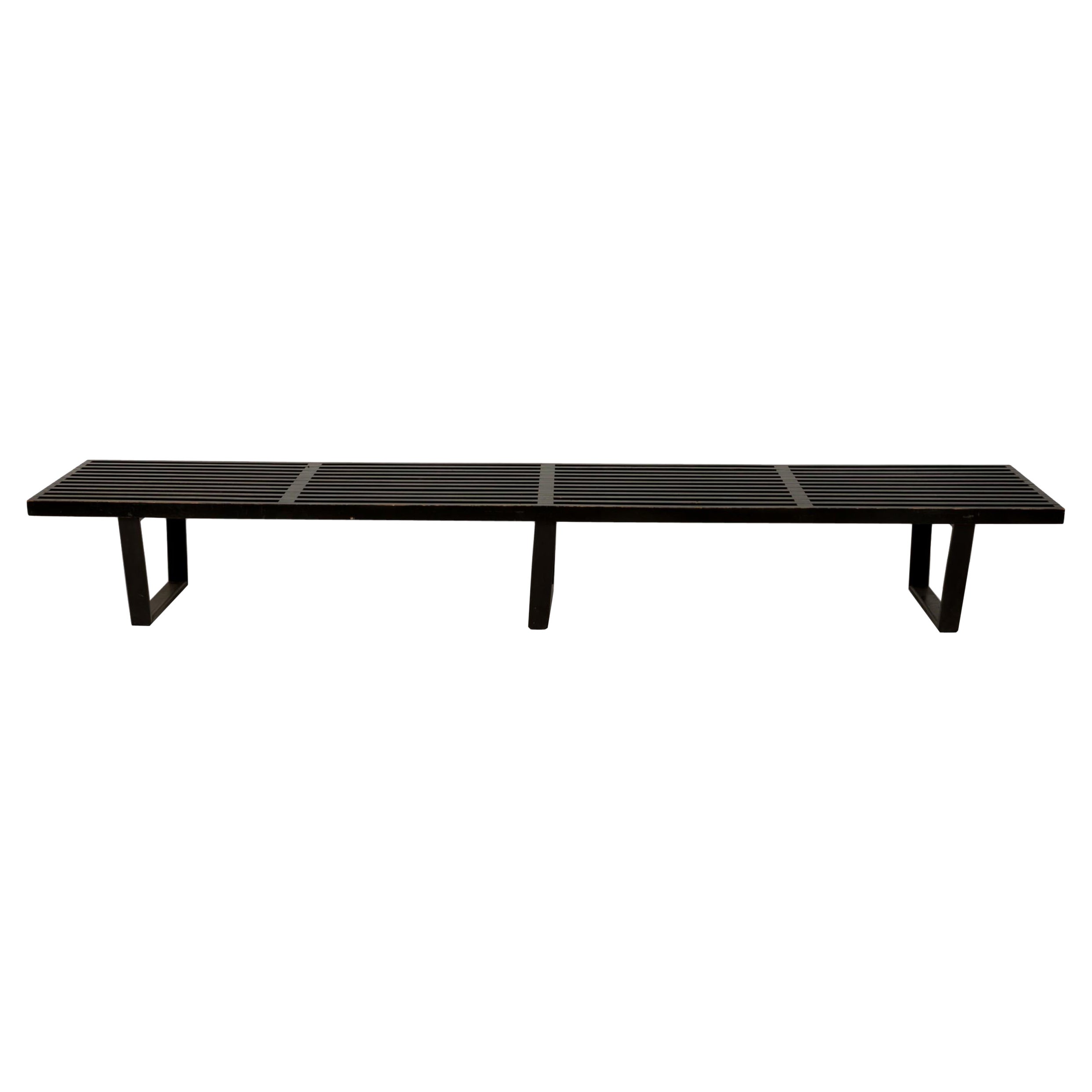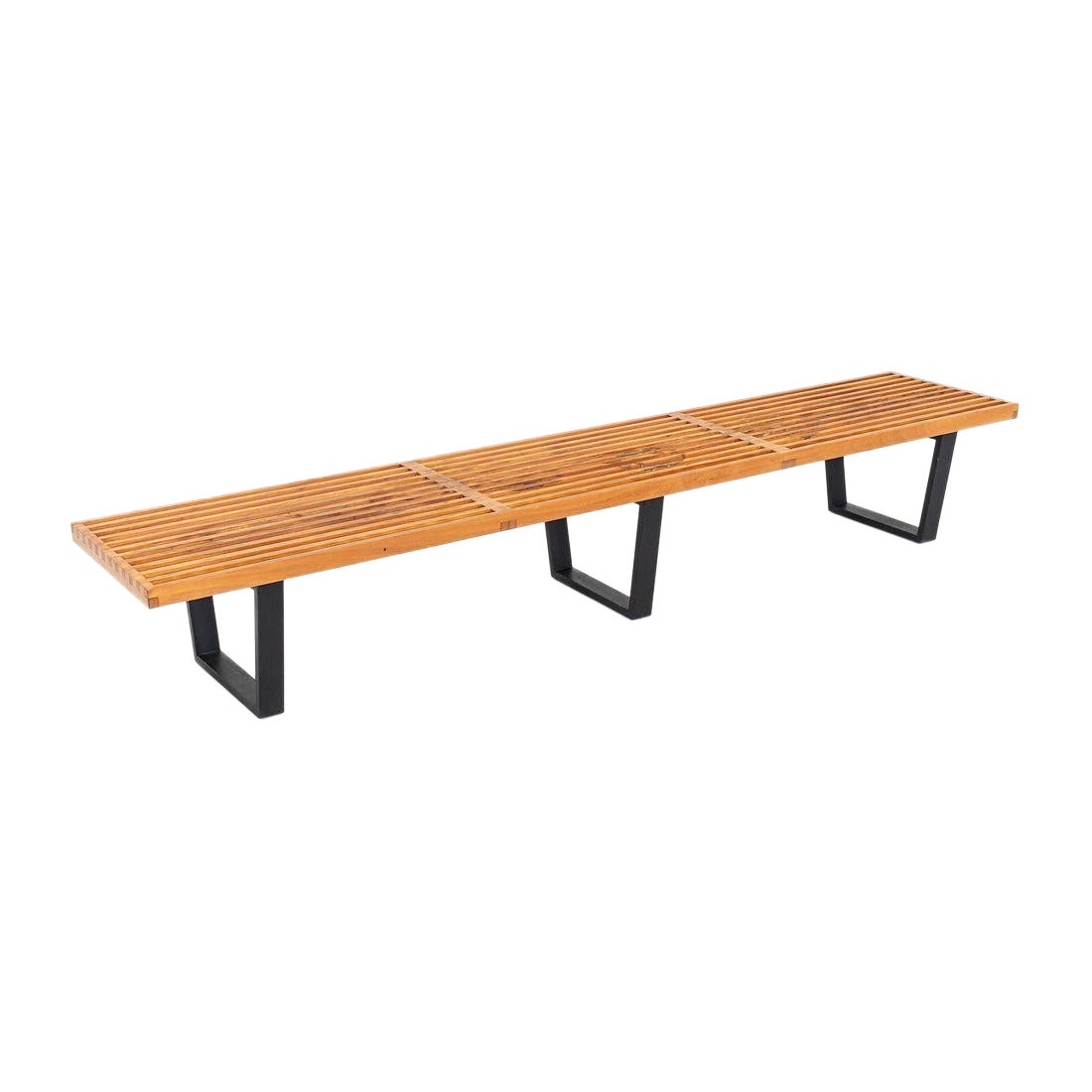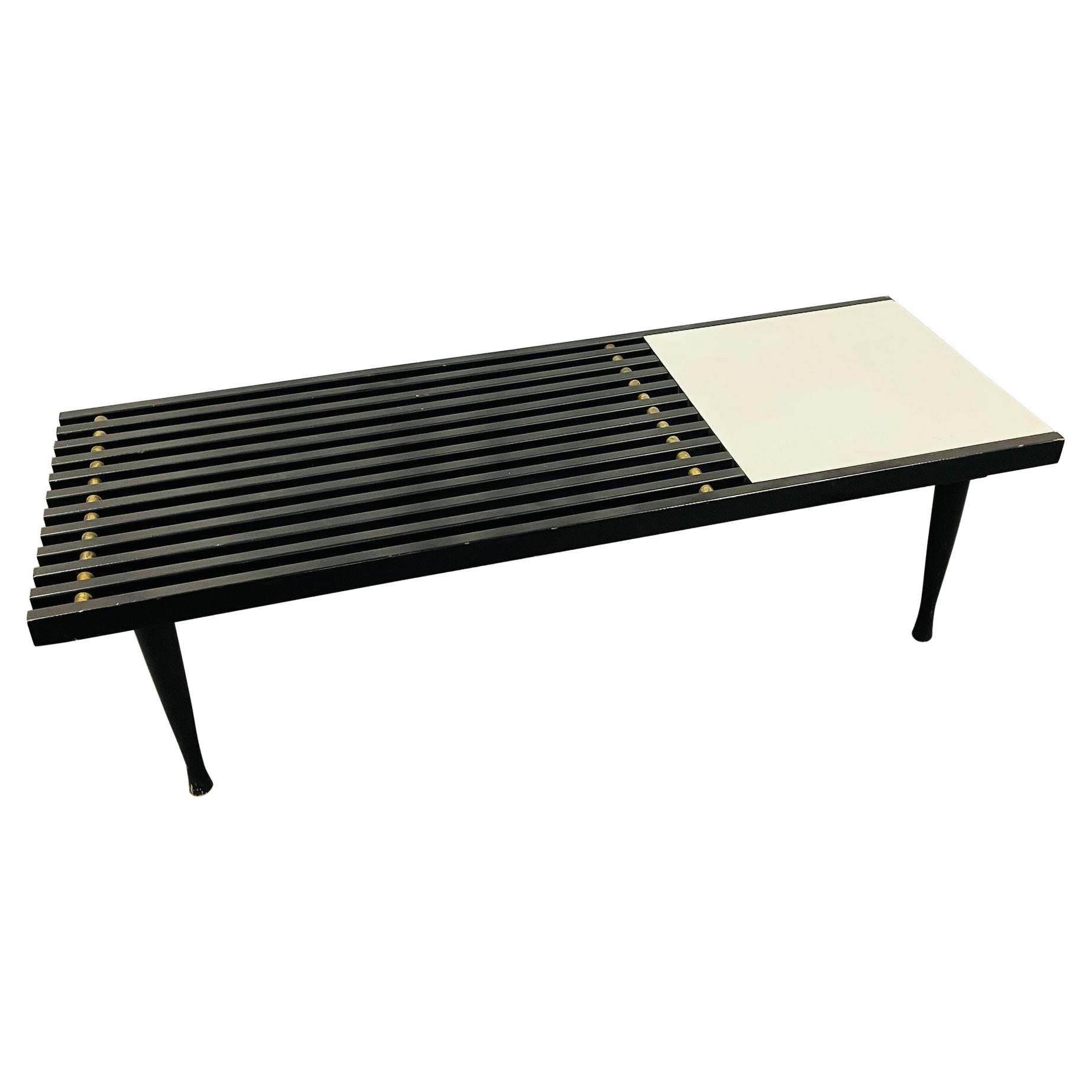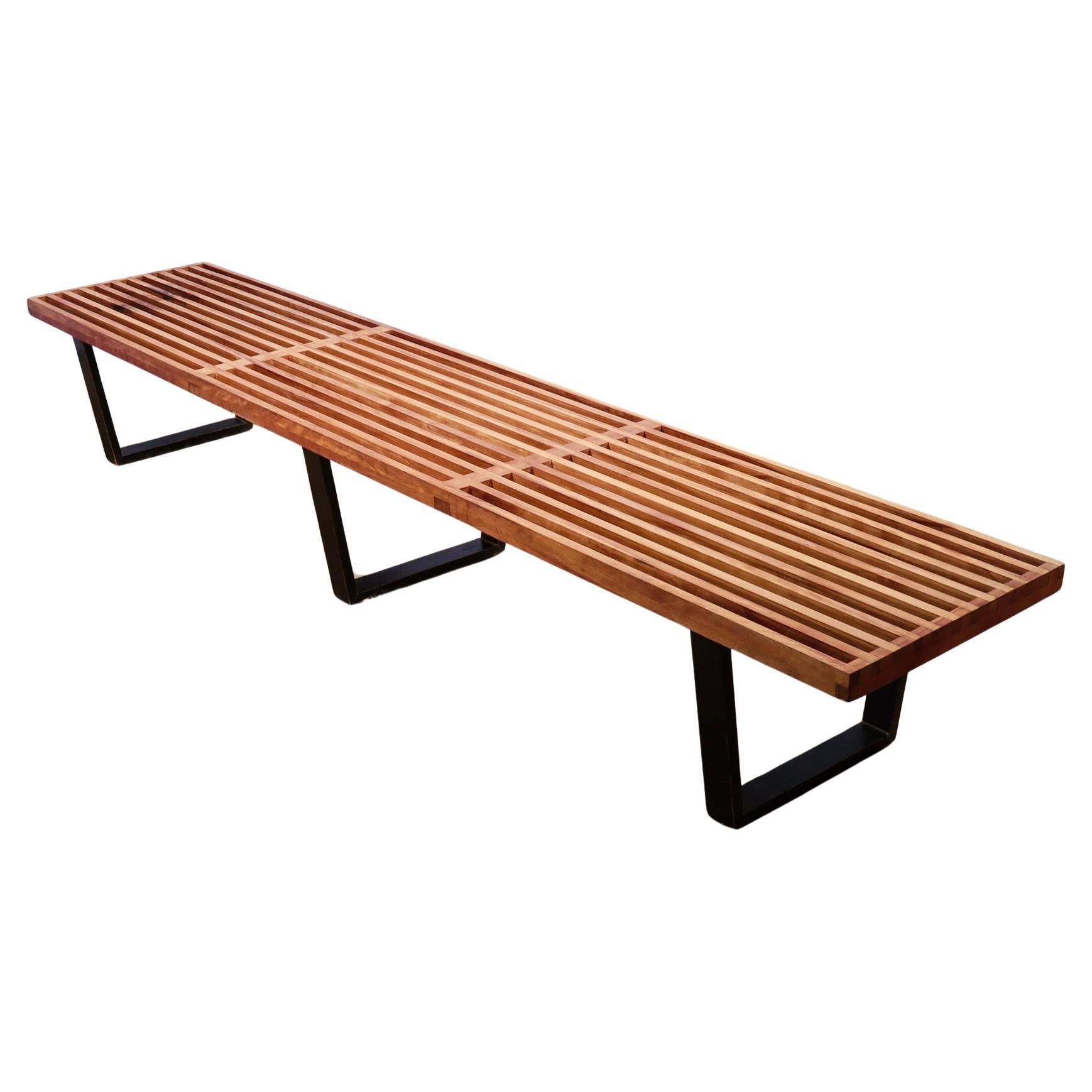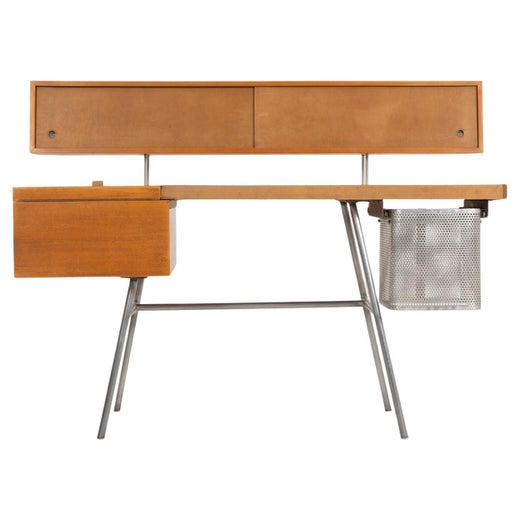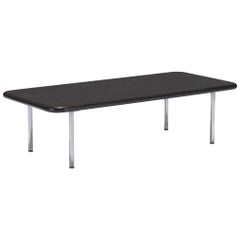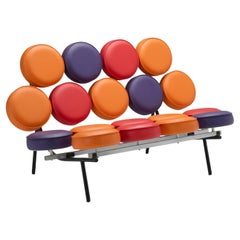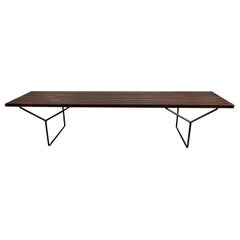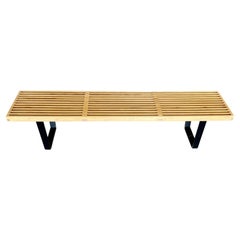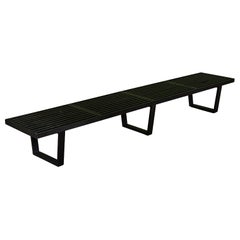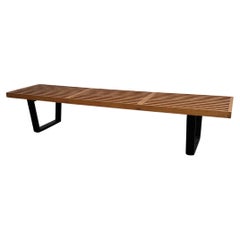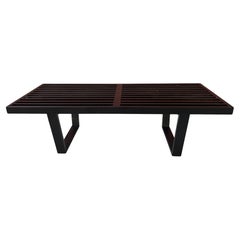
George Nelson for Herman Miller Slatted Bench
View Similar Items
George Nelson for Herman Miller Slatted Bench
About the Item
- Creator:George Nelson (Designer),Herman Miller (Cabinetmaker)
- Design:
- Dimensions:Height: 14.25 in (36.2 cm)Width: 48 in (121.92 cm)Depth: 18.625 in (47.31 cm)Seat Height: 14.25 in (36.2 cm)
- Style:Mid-Century Modern (Of the Period)
- Materials and Techniques:
- Place of Origin:
- Period:
- Date of Manufacture:1950's
- Condition:
- Seller Location:BROOKLYN, NY
- Reference Number:1stDibs: LU1793241996632
Nelson Platform Bench
With its clean lines, sculptural shape and use of organic materials, George Nelson’s Platform bench reflected the American designer’s background in architecture and embodied modernist design. The bench, critical to the Basic Cabinet series he created for Michigan manufacturer Herman Miller — his first collection for the maker — demonstrates Nelson’s enthusiasm for honest, pared-down design.
Nelson (1908–86) grew up in Connecticut and studied architecture at Yale University. While on a post-grad fellowship in Rome, he interviewed numerous pioneering modernist designers, such as Walter Gropius, Ludwig Mies van der Rohe and more for profiles that were published in American architecture journal Pencil Points. Nelson subsequently lectured at Yale and secured prominent architectural commissions, but his editor roles at Architectural Forum and Fortune magazine proved pivotal to his career. After Herman Miller founder D.J. De Pree caught wind of Nelson’s Storagewall — a modular storage concept codeveloped with architect Henry Wright that was featured in Life and in the pair’s book, Tomorrow’s House — he invited him to design modern furniture for the company.
In 1946, Herman Miller debuted Nelson’s spare and versatile slatted-wood Platform bench. Initially comprising a birch top and ebonized wood legs, the bench’s metal base was integrated as an alternative in 1954. Nelson created his Platform bench for his office at Fortune before it found a home at Herman Miller, where it was marketed as seating, a low table or, per an Irving Harper–designed ad, a “plant rest.” It was discontinued in 1967, but the company reintroduced it in 1994. Today, the Nelson Platform bench is available from Herman Miller as well as Vitra (“Nelson bench”) in various sizes and finishes.
George Nelson
Architect, designer, and writer George Nelson was a central figure in the mid-century American modernist design movement; and his thoughts influenced not only the furniture we live with, but also how we live.
Nelson came to design via journalism and literature. Upon receiving his bachelor’s degree in architecture from Yale in 1931, he won the Prix de Rome fellowship, and spent his time in Europe writing magazine articles that helped bring stateside recognition to Ludwig Mies van der Rohe, Gio Ponti, Le Corbusier and other canonical modernist architects.
In the 1940s, Nelson wrote texts that suggested such now-commonplace ideas as open-plan houses, storage walls and family rooms. D.J. De Pree, the owner of the furniture maker Herman Miller, was so impressed by Nelson that in 1944 — following the sudden death of Gilbert Rohde, who had introduced the firm to modern design in the 1930s — he invited Nelson to join the company as its design director. There Nelson’s curatorial design talents came to the fore.
To Herman Miller he brought such eminent creators as Charles and Ray Eames, Isamu Noguchi, and the textile and furniture designer Alexander Girard. Thanks to a clever contract, at the same time as he directed Herman Miller he formed a New York design company, George Nelson & Associates, that sold furniture designs to the Michigan firm. Nelson's studio also sold designs for clocks to the Howard Miller Clock Company, a manufacturer that was initially part of Herman Miller before it became an offshoot that was helmed by Howard Miller, D.J. De Pree's brother-in-law.
Nelson’s New York team of designers (who were rarely individually credited) would create such iconic pieces as the Marshmallow sofa, the Coconut chair, the Ball clock, the Bubble lamp series and the many cabinets and beds that comprise the sleek Thin-Edge line.
For dedicated collectors, as well as for interior designers who look beyond “the look,” there is a “cool factor” inherent to vintage pieces from George Nelson and others. Nelson was in on it from the start, and it’s valuable to have a piece that was there with him.
But still, as is evident from the offerings from dealers on 1stDibs, in any of the designs, in any iteration whose manufacture Nelson oversaw and encouraged, there are shining elements of lightness, elegance, sophistication — and a little bit of swagger. George Nelson felt confident in his ideas about design and didn’t mind letting the world know.
More From This Seller
View AllMid-20th Century American Mid-Century Modern Coffee and Cocktail Tables
Granite, Steel, Chrome
21st Century and Contemporary American Mid-Century Modern Sofas
Aluminum, Steel, Chrome
Vintage 1950s American Mid-Century Modern Benches
Steel
Mid-20th Century American Mid-Century Modern Coffee and Cocktail Tables
Iron
Mid-20th Century American Mid-Century Modern Sofas
Leather, Wood, Lacquer
Late 20th Century American Mid-Century Modern Office Chairs and Desk Chairs
Aluminum, Chrome
You May Also Like
Mid-20th Century American Mid-Century Modern Benches
Maple
Early 2000s American Mid-Century Modern Benches
Wood
Mid-20th Century American Mid-Century Modern Benches
Maple
Vintage 1970s American Mid-Century Modern Benches
Birch
Vintage 1960s American Mid-Century Modern Benches
Wood
21st Century and Contemporary American Mid-Century Modern Benches
Wood
Recently Viewed
View AllRead More
The 21 Most Popular Mid-Century Modern Chairs
You know the designs, now get the stories about how they came to be.
A Guide to Herman Miller’s Most Iconic Furniture
The prolific manufacturer has partnered with many of the world’s top designers since opening its doors in 1923. Here are some of the company’s greatest hits, which helped transform the American home and office.
